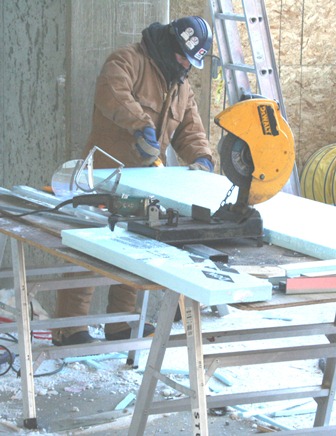
Dear Working Wise:
I just hired a new person to work in our office. She hasn’t started work yet, but she seems like a good fit. She knows the software and has a great personality—but I’m a little worried. She uses a wheelchair to get around and I’m a little concerned about any costs I’m going to have to incur to accommodate her disability. The economy isn’t great right now and my bottom line has never been thinner. Did I make the right decision? Signed, Concerned
Dear Concerned:
It’s always a gamble when you hire any new employee. Most times, they work out fine and your latest hire is no different.
One in seven Albertans has a disability including those with invisible disabilities, such as learning disabilities or mental health issues. You may already employ someone with a disability and not even know it.
Regarding your concern about extra costs associated with accommodating her physical challenges, you may be surprised how little it costs.
A Job Accommodation Network survey of more than 1,000 employers found that 56 per cent of disabled employees required accommodations that cost nothing at all. Employers reported the average cost to accommodate an employee with a disability at $320 and 95 per cent said that it was a one-time cost.
You will also be pleased to know that the Disability Related Employment Supports (DRES) program helps Albertans overcome their barriers to employment. The DRES program can be accessed by your employee to help offset the cost, at least in part, of worksite modifications or assistive technology.
That’s of course if she needs any modifications at all. Many people who live with physical disabilities have become experts in overcoming the challenges of daily living, including work. They’ve often developed systems and tools that enable them to get the job done.
The fact is your new employee is more valuable than you think. Employees with disabilities bring to your company a number of competitive advantages.
Expand your customer base — employees with disabilities can identify with a diverse range of customers and anticipate their wants and needs. Anything you do to “accommodate” your new employee, may help make it easier for seniors and people with disabilities to access your business, e.g., automated doors.
Solve problems creatively — people with disabilities have lots of life experience thinking of innovative solutions to daily problems and challenges.
Improve your public image — hiring people with disabilities shows your customers and staff that your company is an inclusive organization that values everyone’s contributions.
Increase the talent pool — the economy may have slowed down recently, but that will not last forever. Opening your doors to all Albertans gives you more choice to hire the best people. Job seekers with disabilities have historically been an untapped labour source, but technology and increased access to post-secondary education is allowing people with disabilities to reach their full potential and compete side-by-side with everyone else.
Prepare for the future workforce — as the population ages, employers will need to know how to meet the needs of their aging customers and employees. People with disabilities have lots of expertise in this area.
Reduce staff turnover — people with disabilities have better work attendance and stay longer with their employers than the average worker.
For more information on hiring people with disabilities, check out www.workink.com.
For more information on the DRES program, visit www.employment.alberta.ca/dres or speak to a Career and Employment Consultant at your nearest Alberta Service Centre. For the office nearest you, visit: www.employment.alberta.ca/offices
Do you have a work-related question? Send your questions to Working Wise, at charles.strachey@gov.ab.ca. Charles Strachey is a regional manager with Alberta Employment and Immigration. This column is provided for general information.


















